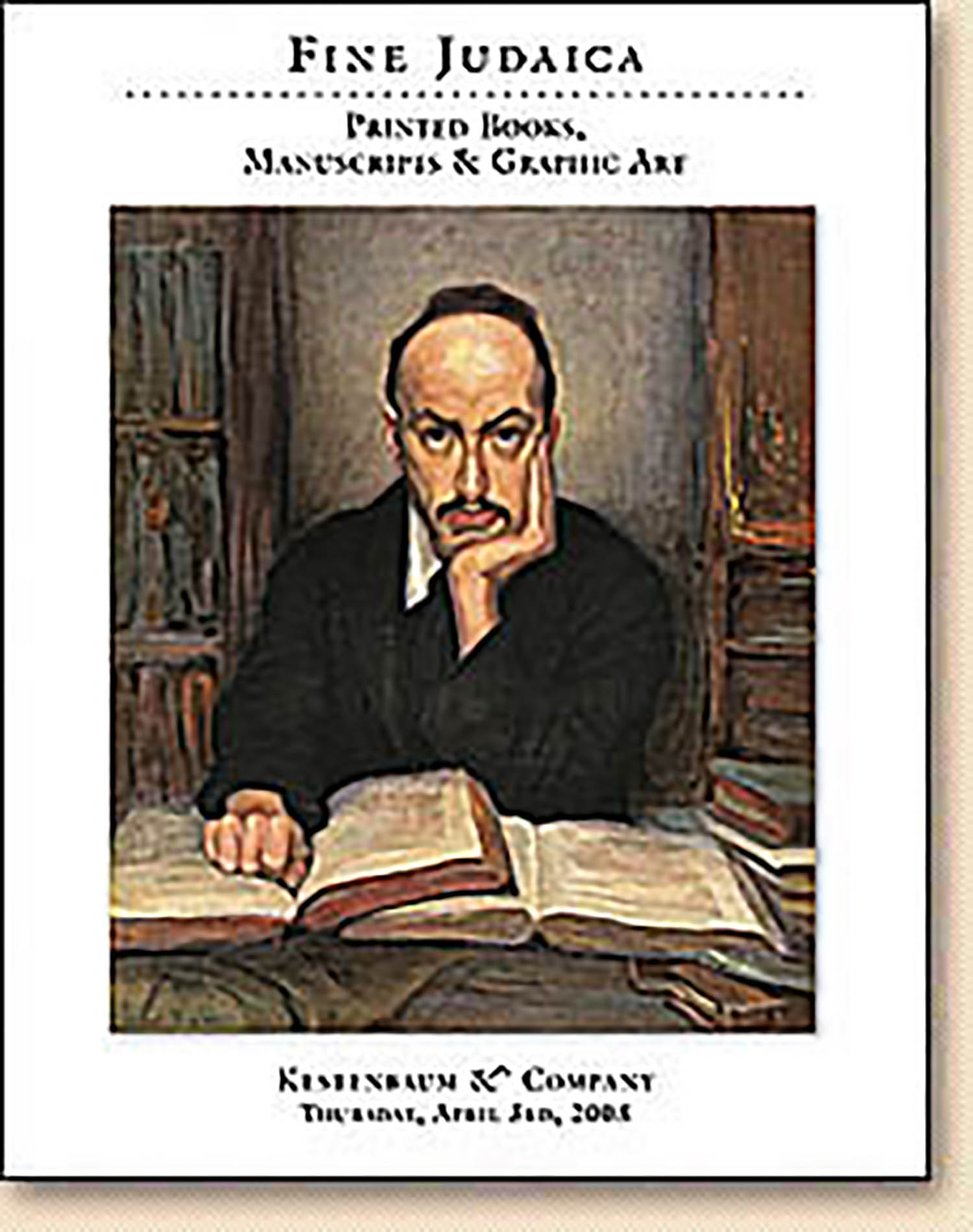(Poet Laureate of Land of Israel, 1873-1934). Mishnah, Tractate Yadayim

AUCTION 39 |
Thursday, April 03rd,
2008 at 1:00
Fine Judaica: Printed Books, Manuscripts, Autograph Letters & Graphic Art
Lot 322
BIALIK, CHAIM NACHMAN.
(Poet Laureate of Land of Israel, 1873-1934). Mishnah, Tractate Yadayim
Israel: Early 1930s
Est: $1,500 - $2,500
PRICE REALIZED $1,300
Bialik's Unpublished Manuscript of the Mishnah.
In 1932, the poet Chaim Nachman Bialik (1873-1934) took the Hebrew literary world by surprise when he published the first volume of his edition of the Mishnah, provided with an original commentary. This volume, Seder Zera'im, was issued by Dvir Publishing House in Tel-Aviv (in which Bialik and Yehoshua Rawnitzki were partners), the projected edition would have spanned all six Orders of the Mishnah, however no further volumes were published.
Although in his maturity, the poet had certainly strayed far from the intense religiosity of his youth, nonetheless, Bialik retained a fondness for the spiritual treasures of the Jewish people. He brings to the text of his Mishnah edition some of the scholarly acumen acquired in the famed Volozhin Yeshiva, where he studied in 1890. Initially, Bialik applied himself diligently to the advanced Talmudic studies in the Lithuanian academy, causing the Rosh Yeshivah, R. Naphtali Zevi Judah Berlin to remark that never had he seen such a gifted pupil from Volhynia. Eventually however, the allure of Western civilization or Haskalah (with which Volozhin was rife) proved too strong for the budding poet and Bialik was asked to leave the Yeshiva. His immortal poem "Ha-Mathmid" (The Diligent Talmud Student) published in 1898, reflects ambivalence to the traditional house of study. The poet expresses a passionate love of Torah study coupled with deep dissatisfaction and yearning for freedom.
According to Prof. Adam Rubin, Bialik's edition of the Mishnah, as well as his earlier Sepher ha-Agadah (1908-1911), are building blocks in an overarching agenda, namely, "to instill a new enthusiasm for the Bible, rabbinic literature, medieval Hebrew poetry, and other classical texts among Jews," while "reshaping Torah into what he referred to as "the national treasure" (ha-otzar ha-le'umi). Rubin writes that Bialik's conception of the Mishnah constituted a radical departure from tradition - he viewed the text not as an expression of normative rules so much as a reflection of the nation's essence. In Bialik's view, the Mishnah is second in importance only to the Bible. To render the text comprehensible to modern Jews, Bialik introduced each tractate, vocalized the text, and composed an easy-to-understand running commentary based on the pre-modern commentaries of Rashi, Maimonides and Bertinuro.
Our manuscript contains Bialik's introduction to and commentary upon Tractate Yadayim from the sixth and final order of the Mishnah. Besides the immediate issue of ritual purity and washing of the hands, the tractate digresses to discussions of the Sadducean controversy and the issue of canonicity.
See EJ, Vol. IV, cols. 795-803; Kiryath Sepher IX [1932-33], p. 421; Nathan Kaminetsky, Making of a Godol (2004), Vol. I, pp. 896-902; Adam Rubin, "'Like Black Pearls Whose String is Broke': Bialik's Aron ha-Sefarim and the Politics of the Jewish Literary Canon"; Moshe Avital, The Yeshiva and Traditional Education in the Literature of the Hebrew Enlightenment Perod [Hebrew] (1996), pp. 211-21
